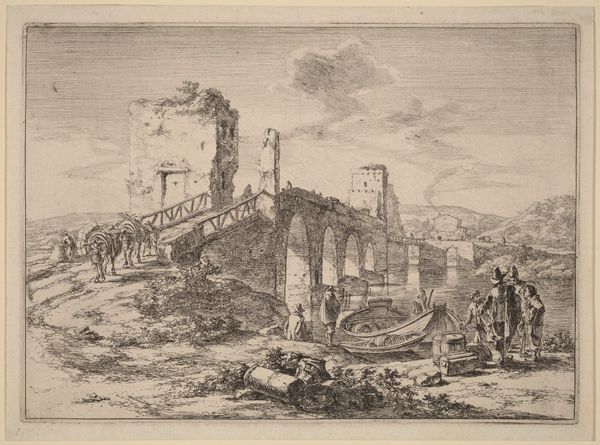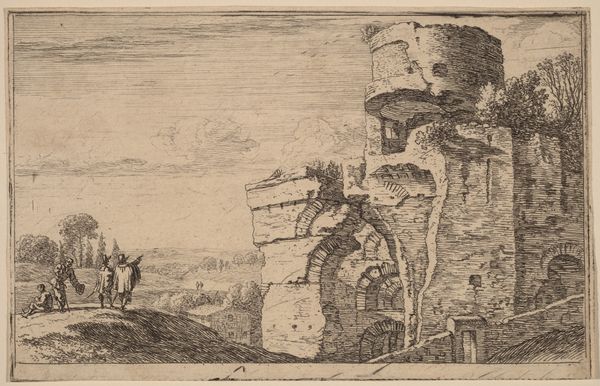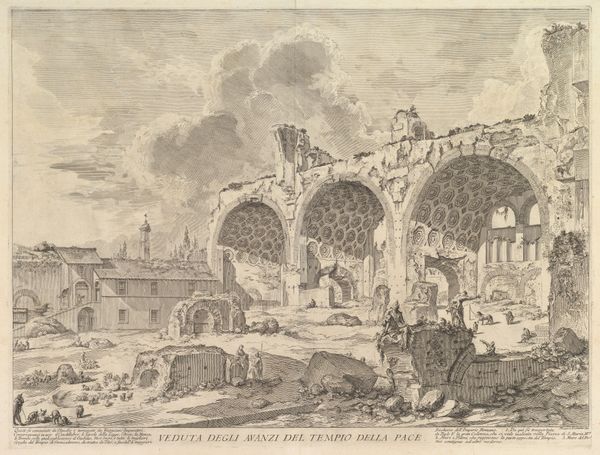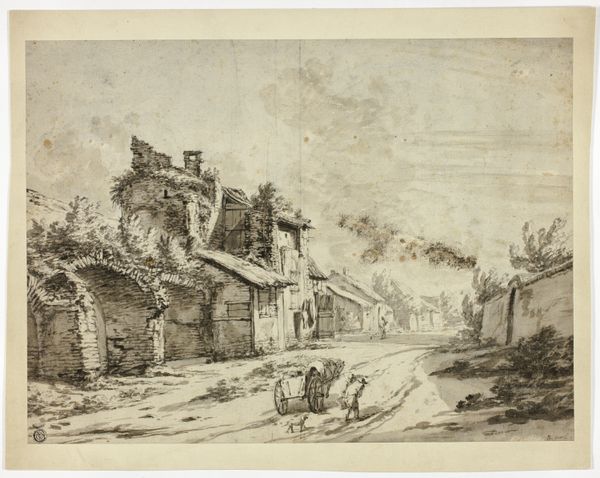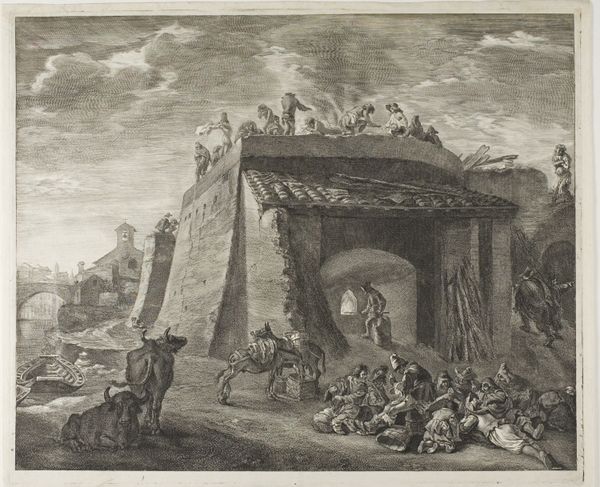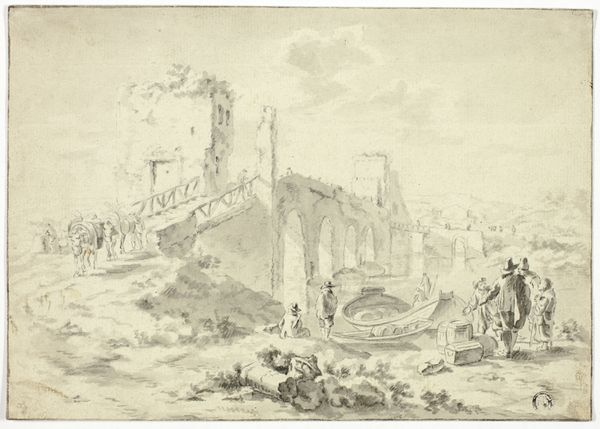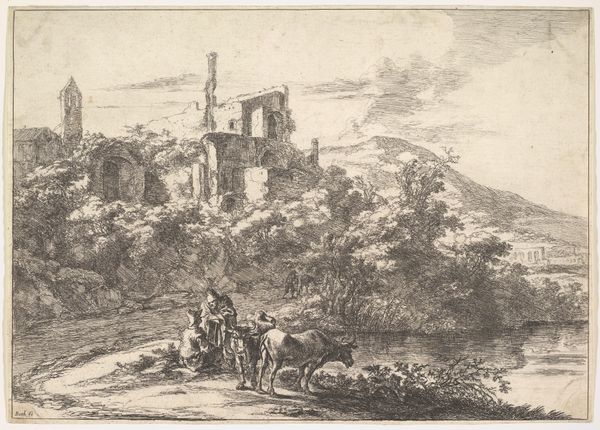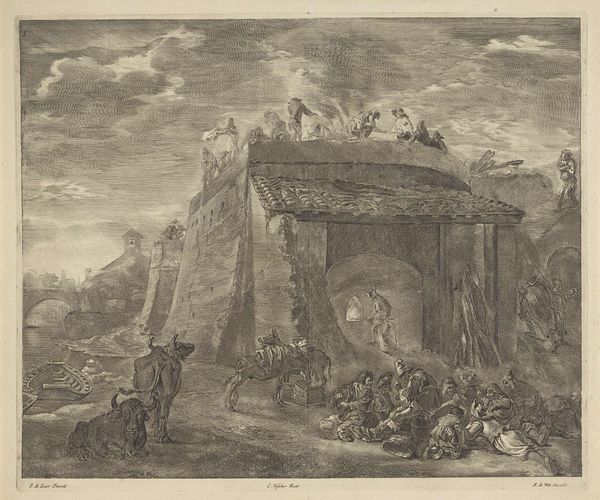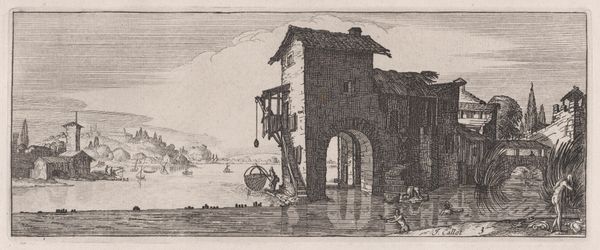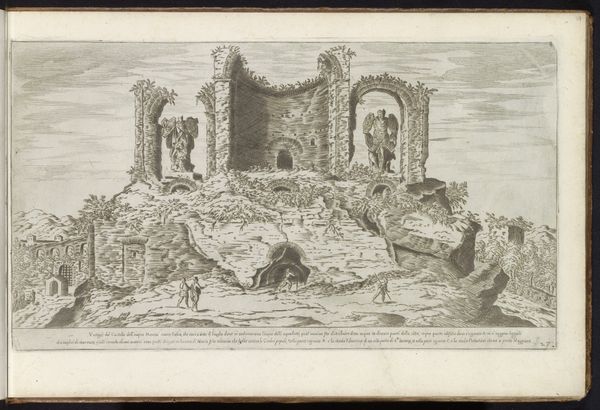
print, etching
#
baroque
# print
#
etching
#
landscape
#
history-painting
Copyright: National Gallery of Art: CC0 1.0
Curator: Here we have "The Four Ruined Arches," an etching by Herman van Swanevelt. There's no firm date for its creation, placing it sometime within his active period. Editor: My initial feeling? It’s somber. The delicate lines, the subject matter—it evokes a sense of faded glory, like looking at a forgotten photograph. Curator: Van Swanevelt really captures the materiality of the ruined arches. Look at the brickwork; he details every crack and missing stone, emphasizing the physical decay. Consider the socio-economic implications—what factors led to this structure’s abandonment? Editor: Exactly! Ruins aren't just pretty backdrops; they represent shifts in power, environmental change, maybe even societal collapse. These arches whisper of empires past. Who had the resources to build this originally? And what communities were displaced in the process? Curator: I agree. And the process itself - etching allows for the creation of multiple originals. Prints such as this one allowed images and architectural knowledge to spread beyond the physical boundaries of Italy. Editor: How interesting it is to observe figures present amidst these relics, they seem dwarfed by history, becoming somewhat incidental to the narrative of what existed before them. Are they mere bystanders or complicit in some way to the downfall? Curator: Fascinating point. The scale certainly reinforces a sense of human insignificance. There is a cyclical return to the use of the material after nature reclaims it. Editor: It encourages us to reconsider our place in the broader scheme of time and legacy. It serves as a great moment of intersectional and interdisciplinary analyses. Curator: Agreed. This print invites us to question not just the materials of art and architecture but the very fabric of civilizations and their rise and fall. Editor: Ultimately, art prompts meaningful dialogue between art history and contemporary theory, opening broader narratives concerning power, erasure, and change through art.
Comments
No comments
Be the first to comment and join the conversation on the ultimate creative platform.
